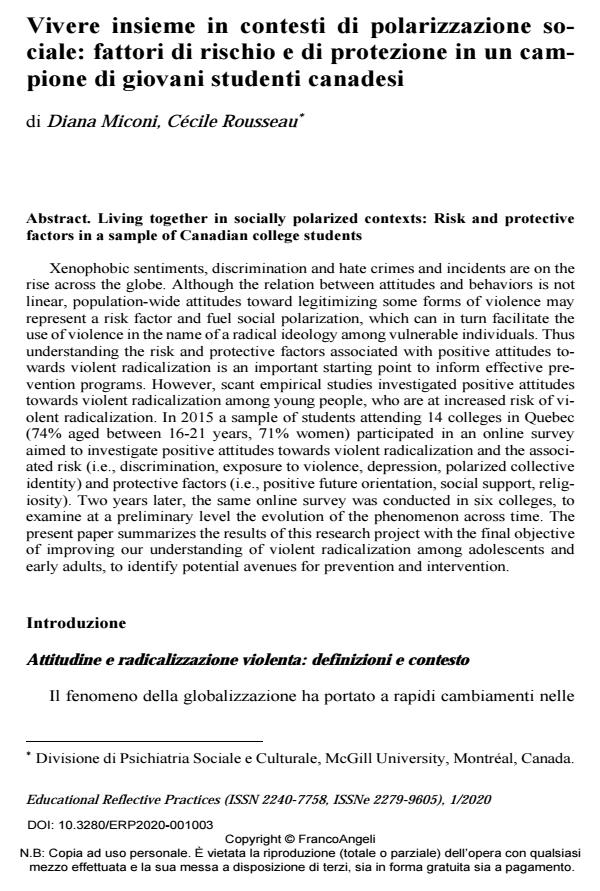Vivere insieme in contesti di polarizzazione sociale: fattori di rischio e di protezione in un campione di giovani studenti canadesi
Titolo Rivista EDUCATIONAL REFLECTIVE PRACTICES
Autori/Curatori Diana Miconi, Cécile Rousseau
Anno di pubblicazione 2020 Fascicolo 2020/1
Lingua Italiano Numero pagine 19 P. 55-73 Dimensione file 264 KB
DOI 10.3280/ERP2020-001003
Il DOI è il codice a barre della proprietà intellettuale: per saperne di più
clicca qui
Qui sotto puoi vedere in anteprima la prima pagina di questo articolo.
Se questo articolo ti interessa, lo puoi acquistare (e scaricare in formato pdf) seguendo le facili indicazioni per acquistare il download credit. Acquista Download Credits per scaricare questo Articolo in formato PDF

FrancoAngeli è membro della Publishers International Linking Association, Inc (PILA)associazione indipendente e non profit per facilitare (attraverso i servizi tecnologici implementati da CrossRef.org) l’accesso degli studiosi ai contenuti digitali nelle pubblicazioni professionali e scientifiche
Xenophobic sentiments, discrimination and hate crimes and incidents are on the rise across the globe. Although the relation between attitudes and behaviors is not linear, population-wide attitudes toward legitimizing some forms of violence may represent a risk factor and fuel social polarization, which can in turn facilitate the use of violence in the name of a radical ideology among vulnerable individuals. Thus understanding the risk and protective factors associated with positive attitudes towards violent radicalization is an important starting point to inform ef-fective prevention programs. However, scant empirical studies investigated posi-tive attitudes towards violent radicalization among young people, who are at in-creased risk of violent radicalization. In 2015 a sample of students attending 14 colleges in Quebec (74% aged between 16-21 years, 71% women) participated in an online survey aimed to investigate positive attitudes towards violent radicaliza-tion and the associated risk (i.e., discrimination, exposure to violence, depression, polarized collective identity) and protective factors (i.e., positive future orientation, social support, religiosity). Two years later, the same online survey was conducted in six colleges, to examine at a preliminary level the evolution of the phenomenon across time. The present paper summarizes the results of this research project with the final objective of improving our understanding of violent radicalization among adolescents and early adults, to identify potential avenues for prevention and intervention.
Diana Miconi, Cécile Rousseau, Vivere insieme in contesti di polarizzazione sociale: fattori di rischio e di protezione in un campione di giovani studenti canadesi in "EDUCATIONAL REFLECTIVE PRACTICES" 1/2020, pp 55-73, DOI: 10.3280/ERP2020-001003